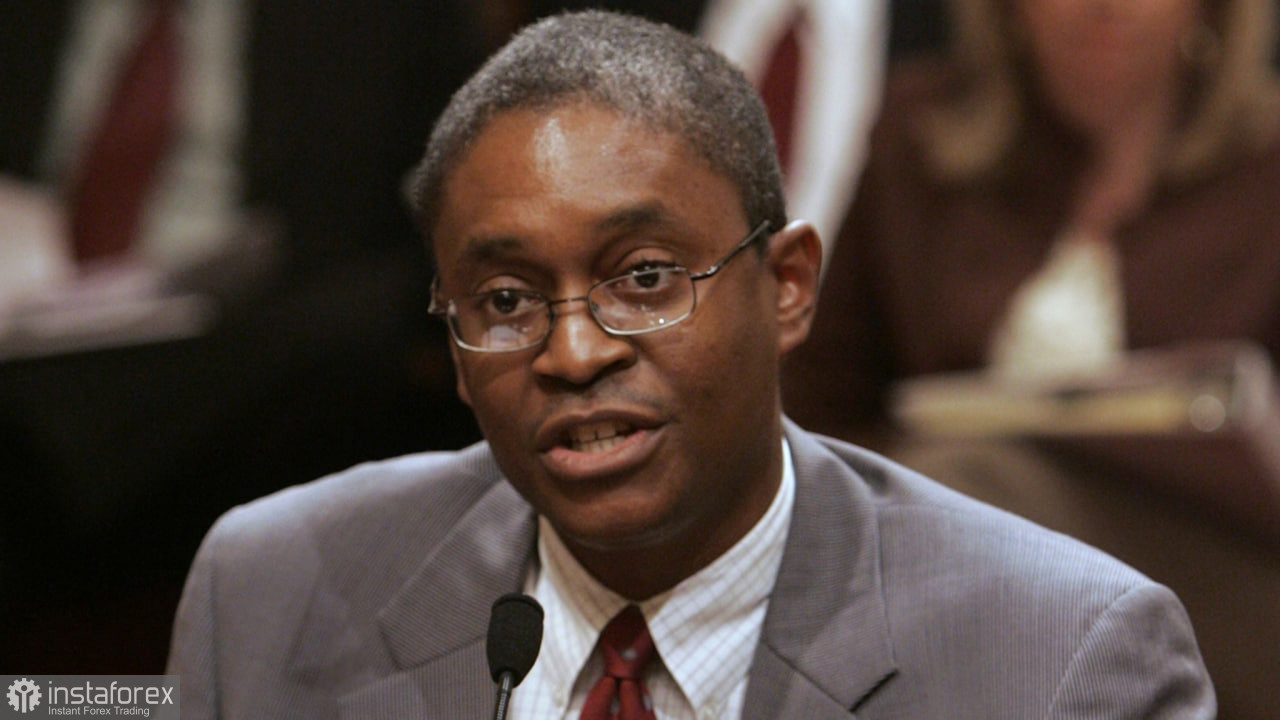
The key US stock market indices - the Dow Jones Industrial Average, the NASDAQ Composite, and the S&P 500 - ended higher on Wednesday. Thus, the recovery from the January correction continues. However, as we said earlier, the current growth barely reflects further market prospects. The fact is that the Fed's plans regarding the tightening of monetary policy have not changed yet. At the same time, the regulator has not yet announced how many times it is going to raise interest rates this year. Experts express widely divergent views on this topic. Analysts anticipate hiking interest rates from three or seven times. As mentioned earlier, three or four increases will hardly have a severe impact on US stock indices and the stock market as a whole. Experts believe that even after hikes, the rate will still be below the neutral level. However, in any case, the very fact of monetary policy tightening will put pressure on indices and stocks.
Atlanta Federal Reserve Governor Raphael Bostic gave a speech yesterday. He cooled the ardor of investors a little, saying that the Fed intends to raise the rate three or four times, but he stressed that the central bank is not locked into a specific plan. In other words, the regulator will be guided by current macroeconomic indicators when making a decision at each meeting. This is logical, since the higher the rate is raised, the slower the US economic growth will be. The central bank needs to achieve stability of consumer prices and their growth by 2% per year, at most. Therefore, if three or four rate hikes are enough to achieve this aim, further monetary policy tightening will not make sense. Another matter is that three or four rate increases will not be enough to bring inflation down from 7% or higher.
"There are currently three outlooks for interest rate hikes this year," Bostic noted. "I'm a little leaning towards four, but as we take the first step towards the first half of this year, we need to see how the economy will react." With these words, Bostic made it clear that the rate of economic growth would also be taken into account when raising interest rates. If there is a deceleration in economic activity, the pace of tightening may be reduced. However, he said the first move might have to be 0.5 percent points or 50 basis points. "The data can show how appropriate a move of 50 or 25 basis points is," the head of the Federal Reserve Bank of Atlanta said. This means that the Fed's decision will largely depend on inflation reports for January and February. By the way, the first one will be published today. According to forecasts, the US consumer price index may accelerate to 7.2-7.3% from the current 7%. If this happens, the central bank will most likely hike interest rates by 0.5% in March.





















